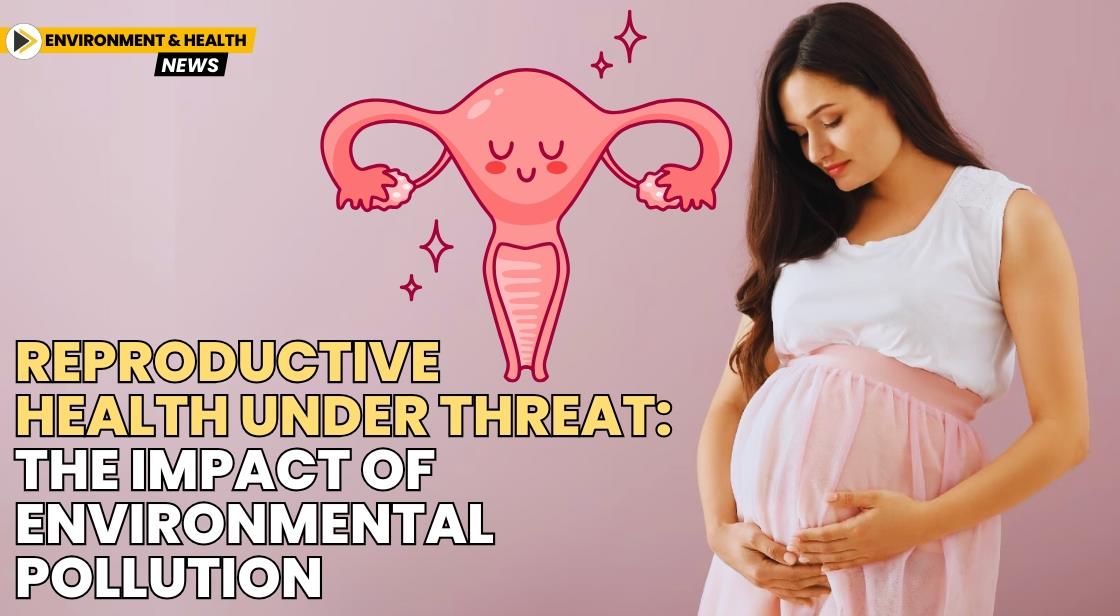Reproductive Health Under Threat: The Impact of Environmental Pollution

News Synopsis
In an age marked by rapid industrial expansion and urban development, pollution's reach extends far beyond respiratory and general health issues, deeply impacting reproductive health for both men and women. Elements once vital to human survival—such as air, water, and soil—are now laden with pollutants that significantly jeopardize fertility. Recognizing the correlation between environmental pollution and reproductive health is essential as rising evidence reveals that these toxins interfere with the biological processes essential for reproduction.
C. Jyothi Budi, Medical Director of Ferty9 Fertility Center, Hyderabad, remarks, “Environmental factors, often viewed as secondary to genetics and lifestyle, are now recognized as significant contributors to fertility health. Pollutants in the air, water, and soil, along with urban noise, can seriously disrupt male and female reproductive systems, interfering with the essential biological processes required for human reproduction.”
Understanding the Impact of Pollution on Fertility
1. The Dangers of Air Pollution on Reproductive Health
Air pollution, particularly fine particulate matter (PM2.5 and PM10) from industrial activities and vehicular emissions, poses severe risks to reproductive health. These minuscule particles infiltrate the body and carry harmful compounds, including polycyclic aromatic hydrocarbons (PAHs). This exposure can lead to oxidative stress, which damages DNA and directly impacts fertility. For men, it can reduce sperm quality, while in women, it has been linked to decreased ovarian reserves and lower egg quality.
A recent study published in the British Medical Journal (BMJ) reported a 24% rise in infertility risk among men aged 30 to 45 due to prolonged exposure to PM2.5 levels approximately 2.9 micrograms per cubic meter above the average over a five-year period.
2. Noise Pollution: An Overlooked Threat
Effects on Female Fertility
Noise pollution from sources like road traffic contributes to female infertility risks. Research from the Journal of Environmental Research and Public Health highlights a concerning trend: women exposed to noise levels 10.2 decibels above the average over five years had a 14% increase in infertility rates. The risks intensify for women over 35, who are more susceptible to the reproductive disruptions caused by sustained noise pollution.
Effects on Male Fertility
While men are generally less affected than women, those aged 37 to 45 exhibit subtle impacts from noise pollution. Noise can disturb sleep and elevate stress, both of which indirectly contribute to declining reproductive health.
3. Water Pollution: A Hidden Danger to Reproductive Health
Industrial waste, agricultural runoff, and outdated water systems can introduce hazardous substances into the water supply, including heavy metals like lead, mercury, and arsenic, and chemicals such as BPA and phthalates. For communities living near industrial sites or contaminated water sources, these pollutants pose heightened risks, particularly for individuals of reproductive age and pregnant women.
Contaminants in water can disrupt hormonal balance, degrade sperm quality, and lower ovarian reserves, increasing the risk of reproductive health issues and congenital defects. Mitigating these risks involves measures like using water filters, regular testing of water quality, and educating communities on water protection.
4. Soil Pollution’s Long-Term Impact on Fertility
Soil contamination due to pesticides and industrial chemicals is another critical issue. These toxins enter the food chain and pose fertility risks for people residing near farms, factories, or areas developed on former industrial land. Such exposure disrupts hormonal balance, impacts embryo survival rates, and has long-term genetic consequences.
Preventative measures include better soil management, enforcing stricter regulations on chemical use, and consistent health monitoring of affected populations.
Conclusion: Raising Awareness and Promoting Healthier Choices
The mounting evidence connecting pollution with fertility challenges emphasizes the need for public awareness and informed action. As Dr. Jyothi Budi stresses, incorporating environmental health discussions into fertility treatment plans is crucial. Patients should be educated on how lifestyle adjustments—such as residing in areas with lower pollution levels and adopting healthier diets—can help reduce environmental risks to fertility. Further research is also essential to develop effective treatments and preventive strategies that protect reproductive health against environmental pollution.
You May Like









